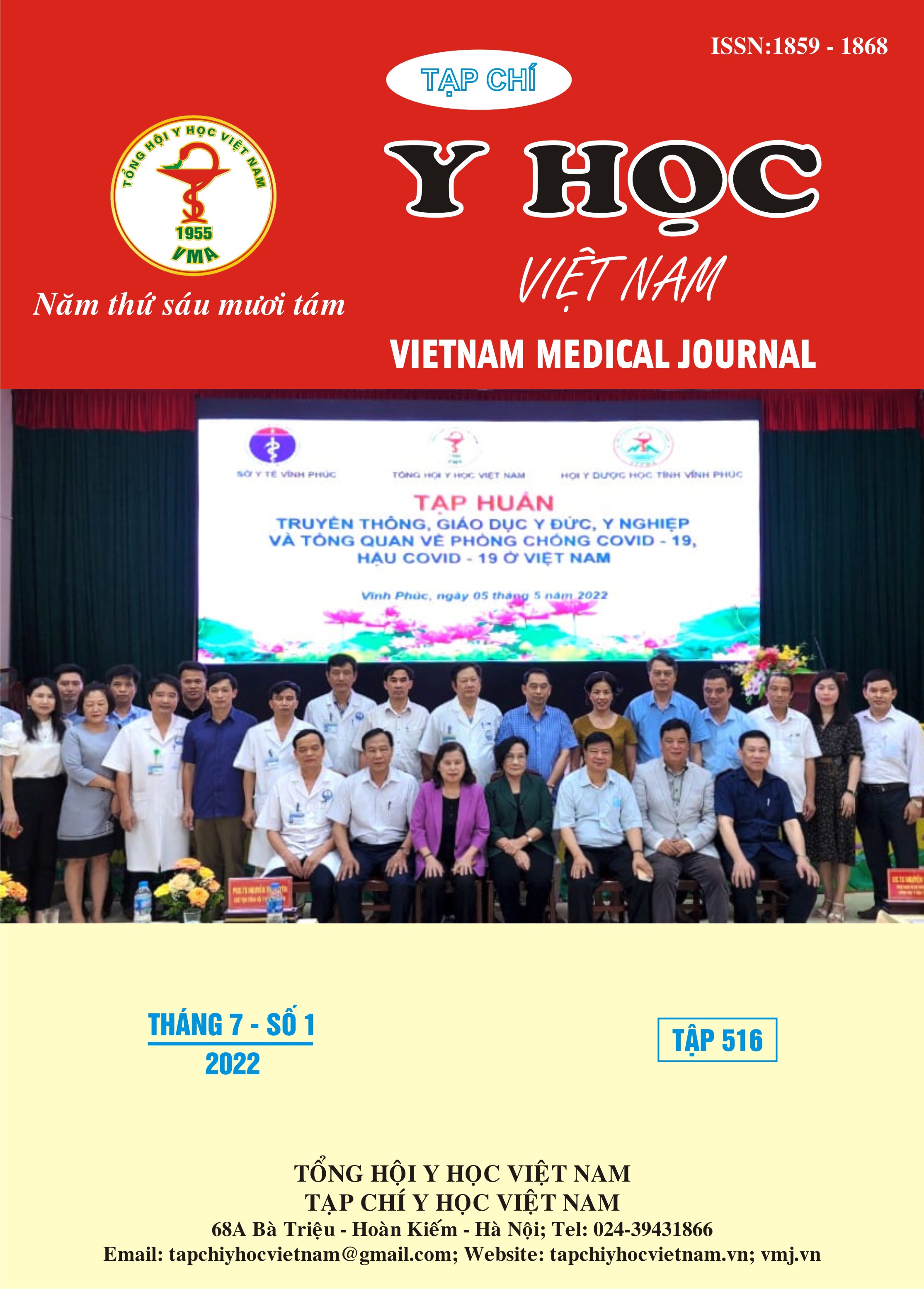SURVEYING THE MICROBIOLOGICAL CHARACTERISTICS OF MULTIPLE ANTIBIOTIC-RESISTANT KLEBSIELLA PNEUMONIAE IN CAN THO CENTRAL GENERAL HOSPITAL
Main Article Content
Abstract
Background: The ESBL-producing, carbapenemase-producing statuses of Klebsiella pneumoniae is a severe problem at present. Objectives: (1). The prevalence of ESBL and carbapenemase-producing Klebsiella pneumoniae were indentified. (2). Survey on the characteristics of multi-antibiotic resistant Klebsiella pneumoniae. Materials and methods: This was a cross-sectional study. There were 399 specimens isolated from septic patients at Can Tho Central General Hospital from 06/2021 to 11/2021. The ESBL and carbapenemase-producing Klebsiella pneumoniae were identified by combined disk test and modified carbapenemase inactivation methods. Results: Among 399 isolated specimens, the rate of Klebsiella pneumoniae producing ESBL was 76.7%; produce carbapenemase 13.8%; Simultaneous production of ESBL and carbapenemase was 13.0%. The number (percentage) of multiple antibiotic-resistant Klebsiella pneumoniae was 375 (94.0%). Klebsiella pneumoniae is 100% resistant to beta-lactam antibiotics; Next to the Quinolone group is 96% and no resistance to the Polymycin group has been recorded. Conclusion: The rate of Klebsiella pneumoniae producing ESBL 76.7%, carbapenemase 13.8%; ESBL and carbapenemase 13%. The rate of multiple antibiotic-resistant Klebsiella pneumoniae was 94,0%.
Article Details
Keywords
Klebsiella pneumoniae, ESBL, carbapenemase
References
2. Bhaskar B.H., et al (2019), Molecular Characterization of Extended Spectrum β-lactamase and Carbapenemase Producing Klebsiella pneumoniae from a Tertiary Care Hospital. Indian Journal of Critical Care Medicine, 23(2), pp.61-66.
3. Ngô Xuân Thái (2019), Đánh giá tình hình nhiễm khuẩn đường tiết niệu tại phòng khám ngoại tiết niệu Bệnh viện Chợ Rẫy, Tạp chí Y Học Thành phố Hồ Chí Minh, 23(2), tr.6-10.
4. Ngô Thế Hoàng, Quế Lan Hương, Nguyễn Bá Lương (2012), Tính kháng thuốc của Klebsiella pneumoniae trong viêm phổi bệnh viện tại bệnh viện Thống Nhất Tp. Hồ Chí Minh. Tạp chí Y Học TP. Hồ Chí Minh, 16(1), tr.264-270.
5. Chu Thị Hải Yến (2014), Khảo sát tỷ lệ đề kháng kháng sinh của vi khuẩn phân lập tại Bệnh viện Cấp Cứu Trưng Vương. Tạp chí Y Học Thành phố Hồ Chí Minh, 18(5), tr.75-82.
6. Võ Thị Chi Mai (2010), Trực khuẩn đường ruột tiết β-lactamase phổ rộng (ESBL) gây nhiễm khuẩn và chiếm cư đường ruột phân lập tại Bệnh viện Chợ Rẫy. Y học TP. Hồ Chí Minh, 14 (2), tr.685-689.
7. Lin J., et al (2020), Increased multidrug resistant isolates: new clinical burdens for 66 hospitals in Shanghai, 2015 to 2017. Annals of Translational Medicine, 8(4), pp.112-118.
8. Bùi Thế Trung (2018), Tình hình Klebsiella pneumonia mang gen kháng carbapenem trên bệnh nhân nhi. Tạp chí Y Học Thành phố Hồ Chí Minh, 22(5), 281-289.
9. Bộ Y tế (2017), Hướng dẫn thực hành kỹ thuật xét nghiệm vi sinh lâm sàng. Nhà xuất bản Y học, Hà Nội.
10. Müller-Schultea E., et al (2020), High prevalence of ESBL-producing Klebsiella pneumoniae in clinical samples from central Côte d’Ivoire. International Journal of Infectious Diseases, 91, pp.207–209.


